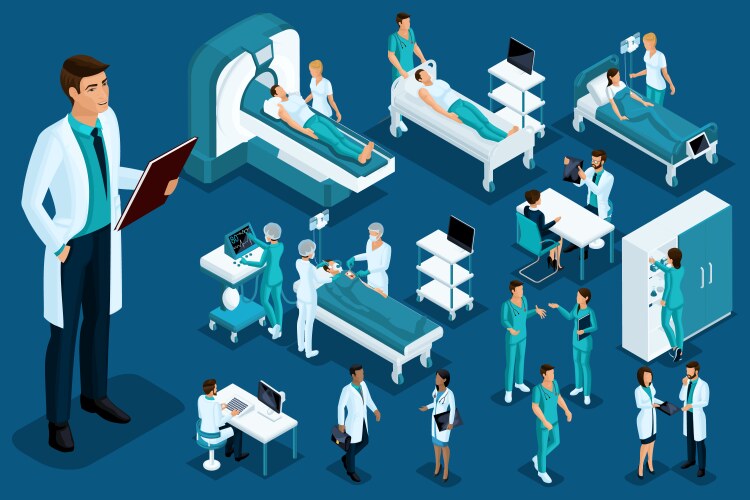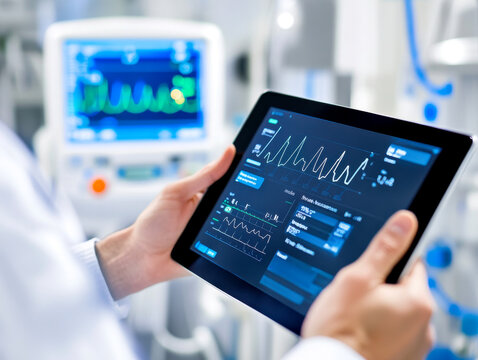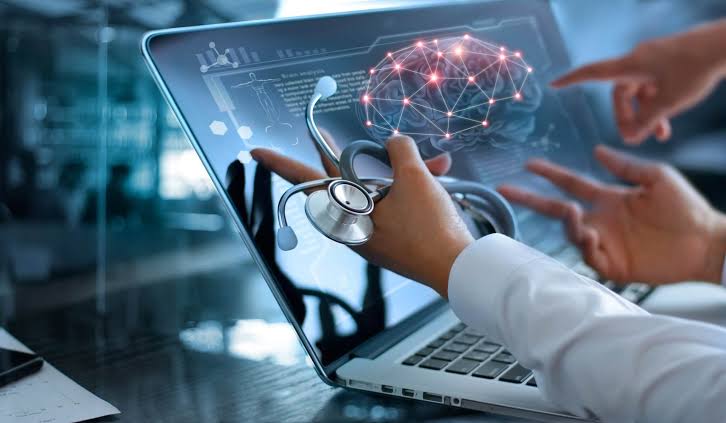medical device integration will conduct this complex medical orchestra towards order, as warned by GooApps.
The 2025 Healthcare Revolution: Why Medical Device Integration is No Longer Optional, It’s Essential
The digital transformation in healthcare is not just a trend; it’s a present-day necessity, with innovations constantly emerging. A cornerstone of this evolution is the connectivity of medical devices. These are not just tools that measure and record; they are increasingly becoming communicators, data sharers, and learners, all focused on creating an interconnected, patient-centric data ecosystem.
The ultimate goal? To realize personalized, predictive, and proactive medicine, powered by high-quality, real-time data. To achieve this, we need medical device software capable of integrating these devices, securing their data, and translating complex readings into actionable clinical decisions.
According to GooApps, the Software as a Medical Device (SaMD) is gaining unprecedented importance in the modern healthcare system.
What is Medical Device Integration?
Medical device integration connects diverse clinical equipment – such as cardiac monitors, infusion pumps, or digital thermometers – with health IT systems, like Electronic Health Records (EHRs).
In essence, it’s the technology that allows medical devices to “speak the same language” as clinical software. This facilitates a continuous flow of information between hardware and software, eliminating the need for manual data entry.

Why is this Integration So Crucial?
Consider the impact: it eliminates manual tasks like a nurse scribbling down vital signs. Instead, you can instantly store that data, making it ready for a physician’s review with complete accuracy and zero transcription errors, mere seconds after capture.
When medical devices are connected, healthcare systems gain significant advantages:
- Accuracy: Minimizes human errors in data transcription.
- Speed: Information is available in real-time, enabling faster clinical responses.
- Clinical Efficiency: Frees up valuable time for healthcare professionals to focus directly on patient care.
- Security: Data is stored directly within the hospital’s secure IT system, reducing vulnerability.
- Quality of Care: Better-informed clinical decisions lead to improved patient outcomes.
The global outlook reinforces this necessity. According to KPMG, the worldwide medical device market will reach $800 billion in sales by 2030, showing sustained annual growth of over 5%.
The Foundation: Reliable and Secure Connectivity
At the heart of any successful integration lies medical device connectivity. This can manifest physically or wirelessly, but the crucial factors remain unwavering: it must be reliable, secure, and ideally, bidirectional.
Common protocols powering this connection include Bluetooth Low Energy (BLE), Wi-Fi, and USB. For more technical applications, standards like MQTT – a lightweight protocol ideal for the Internet of Things (IoT) – are also vital. The choice depends on the clinical context, the specific device, and the hospital’s infrastructure.
The fundamental challenge here is ensuring compatibility between the device and the receiving system. This means defining data transmission parameters from the outset: frequency, volume, format, and protocols for handling potential connection interruptions. A robust foundation in connectivity is non-negotiable for stable integration.
Making Sense of the Data: Normalization is Key
Receiving data is only half the battle; understanding it is the other. Each device manufacturer might use different data structures. For example, manufacturers might label a heart rate as “HR”, “HeartRate”, “BPM”, or “Pulse”. This is where the software’s role as an interpreter becomes paramount.
Through data normalization processes, the integration software translates this diverse array of formats into a common language that clinical systems can process. This standardization is imperative for ensuring data coherence and utility within a Digital Health Record (DHR) or Electronic Health Record (EHR). Without it, you will almost certainly encounter data interpretation errors, traceability issues, and interoperability failures.

Seamless Communication: The Power of Interoperability
For integration to be truly functional, the software must communicate effectively with other existing healthcare systems. This capability is known as interoperability.
Key industry standards facilitate this communication, including:
- HL7 (Health Level Seven): The long-standing, widely adopted standard for clinical interoperability.
- FHIR (Fast Healthcare Interoperability Resources): The modern standard designed for APIs, enabling more agile data exchange.
- DICOM (Digital Imaging and Communications in Medicine): Essential for the integration of medical imaging data, such as X-rays and ultrasounds.
The Paramountcy of Security and Privacy
In healthcare, data security is not just a feature; it’s a fundamental requirement. Clinical data is highly sensitive, necessitating robust security measures.
Medical device integration software must incorporate:
- End-to-end encryption: Protecting data from the device to the system.
- Access management: Granular control over who can view and interact with data.
- Robust authentication: Verifying user identities securely.
- Access traceability: Maintaining logs of who accessed what data and when.
Furthermore, compliance with regulatory frameworks is essential. In Europe, this means adhering to GDPR, while in international contexts, regulations like HIPAA (Health Insurance Portability and Accountability Act) in the US are critical. Without this legal and technical backbone, no serious healthcare provider will adopt an integration solution.
The User Experience Matters: Intuitive Interfaces
A common pitfall in integration projects is overlooking the end-user: the healthcare professional. The software must be intuitive, visual, and agile.
Medical device software must offer a clear, functional interface tailored to the clinical workflow. This includes features like customizable alerts, smart filtering, and a user experience (UX) design that prioritizes efficiency. It’s not a consumer app; it’s a life-saving tool, and its interface must reflect that critical role.
The Rise of Software as a Medical Device (SaMD)
Looking ahead to 2025 and beyond, we’re seeing a significant shift. It’s no longer just about software that manages devices; in many cases, the software itself becomes the medical device. This is known as Software as a Medical Device (SaMD).
These systems go beyond merely displaying or storing data. They often perform diagnostic or therapeutic functions. Making their integration capabilities and adherence to stringent software development lifecycle requirements more crucial than ever.
As we stand on the cusp of 2025, we are meticulously composing the future of healthcare.The integration of medical devices is emerging not merely as a technological advancement, but as the essential conductor orchestrating a symphony of synchronized patient data.
This digital transformation is no longer a distant prospect; it’s a present necessity, driven by innovations that empower medical equipment to communicate, share, and learn.
By fostering this interconnected, patient-centric ecosystem, medical device connectivity will redefine healthcare, moving us decisively from fragmented data to cohesive, intelligent, and proactive patient care.

